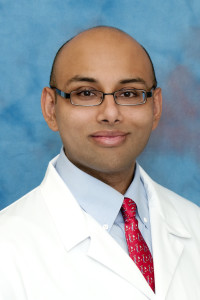Editor’s note: Last month, Repertoire interviewed Jennifer Lenoci-Edwards, patient safety director, Institute for Healthcare Improvement, about patient safety in the primary care office. This month, we talk to Rahul Nayak, M.D., MBA, who, while serving as Kaiser Permanente Georgia’s physician program director for patient safety, attended IHI’s Patient Safety Executive Development Program. Part of Kaiser Permanente’s program involves a systematic approach to critical abnormal labs.
Repertoire: You received a master’s degree in business administration while working on your M.D. degree. What were your thoughts and goals at the time?
Rahul Nayak: During my third year of clinical rotations, I was struck by how often finances and financial concerns drove healthcare decisions outside of the academic environment. I evaluated the various courses of study that would prepare me to advocate for my patients and for my profession; an MBA seemed to be the most practical and high yield.
Repertoire: Why did you join Kaiser Permanente in Georgia?
Rahul Nayak: I ask one question when evaluating a good or service: “How does this company make money?” I want the answer to that question to be aligned with my needs and interests. The way that Kaiser Permanente makes money makes sense to me – we make money by keeping people healthy and getting them over illness as quickly as possible. Kaiser Permanente also values my expertise in performance improvement, and I have opportunities to apply that knowledge to benefit my patients and the organization.
Repertoire: Why did you attend the IHI Patient Safety Executive Development Program?
Rahul Nayak: I had a portfolio of work around patient safety and risk mitigation, but I needed a patient safety “boot camp.” IHI offered the most robust and well respected example. The experience and passion of the faculty, including some from Kaiser Permanente, is unmatched.
Repertoire: The IHI program must have struck a chord with you, because you worked on patient safety initiatives for close to a year before being named Kaiser Permanente of Georgia’s Physician Program Director for Patient Safety in May 2011. What were the key insights you gained from it?
Rahul Nayak: IHI provides the core set of skills necessary for any professional in the safety space. It offers an approach to data, root cause analysis, change management, and leadership/structure development. One of the highlights was the opportunity to closely interact with the faculty as well as the other leaders who were participating in the program. The fundamental systems approach and the application of scientific method to safety has influenced all of my subsequent work.
Repertoire: How does Kaiser Permanente Georgia’s “centralized safety net” project relate to patient safety and critical abnormal labs?
Rahul Nayak: Centralized Safety Net was developed by Kaiser Permanente in Southern California and deployed successfully across that region. In a root cause analysis of an event, we concluded that we needed a more systematic approach to critical abnormal labs. Connections I had made at IHI with other safety leaders at Kaiser Permanente led us to contact the Southern California team responsible for their safety net, which is a powerful concept. The “safety net” system accepts that no one is perfect and provides a way to back up both our patients and our providers. Our success was measured in lives saved and a better night’s sleep for our providers – and we actually won an award for our adoption of their work.
Repertoire: Kaiser Permanente Georgia has multiple sites and hundreds of clinicians. Talk about the challenge of building a patient safety program in multiple sites.
Rahul Nayak: We have many advantages by being a large system with many shared services. This allows us to test and refine improvements in a small unit and then scale those changes across the entire region. The biggest challenge for outpatient safety is the geographic and temporal spread. This differs from a hospital setting, where there is a well-defined amount of time from admission to discharge, one building, and a great deal of focus and regulation.
Repertoire: What is the most difficult part of sustaining a culture of patient safety, day after day, month after month, year after year?
Rahul Nayak: The challenge is that there is a great deal of energy focused on safety after an adverse event, which tapers off over time. Keeping safety front and center is often difficult, if it is separated from your other organizational goals. We believe that safety, efficiency, great outcomes, great service and affordability are all manifestations of the way that we do our work, so it is linked as one of the desired and measured outcomes.
Repertoire: You stepped down as program director for patient safety in January 2015. What’s next for you?
Rahul Nayak: There are many challenges ahead of us in healthcare. Right now, I am interested in helping develop the model of care that will take us into the future. The U.S. healthcare system is not sustainable in the long term, and recent changes in legislation have opened up opportunity for different models of healthcare delivery. As much as I enjoyed the work that I did in patient safety, it always felt as though I was helping steer a fire truck from the back – able to nudge and influence, but not really picking the direction. The fact remains that safety, service, and efficiency happen at the front line of care delivery, and working in that space is my next challenge.
